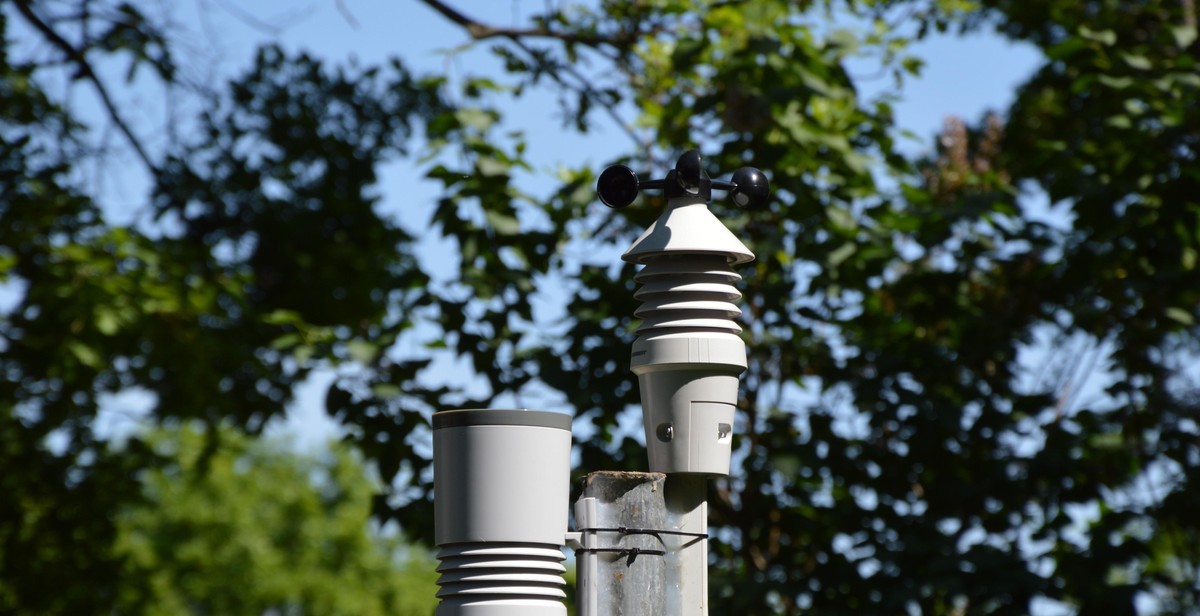How to Become a Meteorologist: Education and Career Path in Meteorology
Do you have a fascination with weather patterns and atmospheric phenomena? Are you interested in predicting the weather and its impacts on the environment and society? If so, a career in meteorology may be right for you.
Meteorology is the scientific study of the atmosphere, weather, and climate. Meteorologists use a variety of tools and methods to understand and forecast weather patterns, including satellites, radar, computer models, and weather balloons. They also analyze historical data and current conditions to predict future weather events and their potential impacts.
Education Requirements for Meteorologists
To become a meteorologist, you typically need at least a bachelor’s degree in atmospheric science, meteorology, or a related field. Some employers may require a master’s degree or higher for advanced research or leadership positions. Coursework typically includes physics, chemistry, calculus, computer science, and atmospheric dynamics.
Many meteorologists also gain hands-on experience through internships or research opportunities. These experiences can provide valuable skills and networking opportunities for future job prospects.
Career Path in Meteorology
Meteorologists can work in a variety of industries and roles, including government agencies, media outlets, aviation, energy, and environmental consulting. Entry-level positions may include weather forecasters, research assistants, or data analysts. As meteorologists gain experience and expertise, they may advance to leadership or management positions, or specialize in a particular area of meteorology.
According to the Bureau of Labor Statistics, the median annual salary for atmospheric scientists, including meteorologists, was $97,160 as of May 2020. Employment in this field is projected to grow 6 percent from 2019 to 2029, about as fast as the average for all occupations.
If you’re interested in becoming a meteorologist, there are many educational and career opportunities available to help you achieve your goals.

What is Meteorology?
Meteorology is the scientific study of the atmosphere and its phenomena, including weather and climate. Meteorologists use various tools and techniques to observe, measure, and analyze atmospheric conditions, including temperature, humidity, air pressure, wind speed and direction, and precipitation. They also study the behavior of weather systems and the factors that influence their development and movement.
History of Meteorology
Meteorology has a long and fascinating history that dates back to ancient civilizations. The ancient Greeks, for example, were among the first to study the weather and make observations about atmospheric conditions. In the Middle Ages, Arab scholars made significant contributions to the field of meteorology, including the development of instruments like the astrolabe and the invention of the thermometer.
Modern meteorology began to emerge in the 18th and 19th centuries with the development of the barometer, the thermometer, and other instruments that allowed scientists to measure atmospheric conditions with greater accuracy. Today, meteorology is an increasingly sophisticated field that relies on advanced technology, such as weather satellites, radar, and computer models to predict and analyze weather patterns and climate change.
Branches of Meteorology
Meteorology is a diverse field that encompasses many different sub-disciplines, including:
- Synoptic meteorology: the study of large-scale weather systems and the factors that influence their development and movement.
- Climatology: the study of long-term weather patterns and trends, including climate change.
- Atmospheric physics: the study of the physical properties and behavior of the atmosphere, including the interaction of radiation with atmospheric gases.
- Meteorological instrumentation: the development and use of instruments and techniques to measure and analyze atmospheric conditions.
- Meteorological modeling: the use of computer models to simulate and predict weather patterns and atmospheric conditions.
Importance of Meteorology
Meteorology is an important field of study that has many practical applications, including:
- Weather forecasting: Meteorologists use their knowledge of atmospheric conditions and weather patterns to predict weather events, such as hurricanes, tornadoes, and blizzards, and to issue warnings to the public.
- Agriculture: Farmers and other agricultural professionals rely on meteorological data to make decisions about planting, harvesting, and irrigation.
- Aviation: Pilots and air traffic controllers use meteorological information to plan flights and ensure the safety of passengers.
- Energy production: Meteorological data is used to forecast wind and solar energy production, as well as to predict and mitigate the potential impact of severe weather events on energy infrastructure.
In summary, meteorology is a fascinating and important field of study that has many practical applications. Whether you are interested in weather forecasting, climate change, or atmospheric physics, a career in meteorology can be both rewarding and challenging.

Education Requirements for Meteorologists
To become a meteorologist, you will typically need to have at least a bachelor’s degree in meteorology or atmospheric science. These programs typically take four years to complete and provide students with a comprehensive understanding of the Earth’s atmosphere, weather patterns, and climate systems.
During your undergraduate studies, you will take courses in physics, chemistry, calculus, and statistics, as well as specialized courses in meteorology. You will also have the opportunity to gain hands-on experience through internships or research projects.
Master’s Degree
While a bachelor’s degree may be sufficient for some entry-level positions, many meteorologists choose to pursue a master’s degree in meteorology or a related field. A master’s degree program typically takes two years to complete and provides students with advanced knowledge and skills in areas such as atmospheric dynamics, climate modeling, and weather forecasting.
Graduate students may also have the opportunity to conduct independent research and contribute to scientific publications. This experience can be valuable when pursuing more advanced positions in the field.
Doctoral Degree
For those interested in pursuing a career in research or academia, a doctoral degree in meteorology or atmospheric science may be necessary. A doctoral program typically takes four to six years to complete and involves advanced coursework, independent research, and the completion of a dissertation.
Graduates with a doctoral degree in meteorology may go on to work as university professors, research scientists, or consultants for government agencies or private companies.
| Degree | Duration | Description |
|---|---|---|
| Bachelor’s Degree | 4 years | Provides a comprehensive understanding of meteorology and atmospheric science |
| Master’s Degree | 2 years | Provides advanced knowledge and skills in areas such as atmospheric dynamics and weather forecasting |
| Doctoral Degree | 4-6 years | Necessary for those interested in pursuing a career in research or academia |

Meteorology Courses to Take
If you want to become a meteorologist, you need to have a strong foundation in atmospheric science, which includes atmospheric physics, dynamic meteorology, synoptic meteorology, and climatology. Below are some courses that will help you build the necessary knowledge and skills for a career in meteorology:
Atmospheric Physics
Atmospheric physics is the study of the physical properties and processes of the Earth’s atmosphere. This course covers topics such as atmospheric thermodynamics, radiation, and dynamics. It also includes an introduction to the principles of atmospheric chemistry and the interactions between the atmosphere and the Earth’s surface.
Dynamic Meteorology
Dynamic meteorology is the study of the physics and dynamics of the atmosphere. This course covers topics such as atmospheric circulation, atmospheric waves, and the principles of atmospheric modeling. It also includes an introduction to the principles of numerical weather prediction and the use of computer models in weather forecasting.
Synoptic Meteorology
Synoptic meteorology is the study of large-scale weather patterns and the processes that drive them. This course covers topics such as the interpretation of weather maps, the analysis of weather data, and the use of synoptic charts in weather forecasting. It also includes an introduction to the principles of atmospheric dynamics and the role of atmospheric circulation in weather patterns.
Climatology
Climatology is the study of the Earth’s climate and how it changes over time. This course covers topics such as the Earth’s energy balance, the greenhouse effect, and the causes of climate change. It also includes an introduction to the principles of climate modeling and the use of computer models to predict future climate trends.
| Course Title | Institution | Duration |
|---|---|---|
| Atmospheric Physics | University of California, Los Angeles | 10 weeks |
| Dynamic Meteorology | Massachusetts Institute of Technology | 12 weeks |
| Synoptic Meteorology | Pennsylvania State University | 15 weeks |
| Climatology | University of Michigan | 10 weeks |
These courses are typically offered as part of a degree program in atmospheric science, meteorology, or a related field. However, some courses may be available online or as standalone courses for individuals who want to gain knowledge in a particular area of meteorology.
By taking these courses and gaining a strong understanding of atmospheric science, you will be well-prepared for a career in meteorology. You will have the skills and knowledge needed to analyze weather patterns, predict future weather trends, and communicate weather information to the public.

Internships and Work Experience
Internships and work experience are crucial for aspiring meteorologists to gain the practical skills and knowledge required for a successful career in meteorology. These opportunities provide hands-on experience in a real-world setting and allow students to apply the theories and concepts they learned in the classroom.
Internships
Internships are a great way to gain experience and make connections in the field of meteorology. Many universities offer internships in collaboration with local weather stations or government agencies. Students can also find internships through professional organizations such as the American Meteorological Society (AMS) or the National Weather Association (NWA).
During an internship, students may work on tasks such as collecting and analyzing weather data, creating weather forecasts, or assisting with research projects. Internships can be paid or unpaid, and the duration can range from a few weeks to several months.
Work Experience
Work experience in meteorology can be gained through various entry-level positions such as weather observer, data analyst, or meteorological technician. These positions can be found in government agencies, private companies, or research institutions.
Working as a weather observer involves collecting and recording weather data, while a data analyst may be responsible for analyzing and interpreting weather data to develop forecasts. A meteorological technician may assist meteorologists in conducting research or developing new weather models.
Benefits of Internships and Work Experience
Internships and work experience provide numerous benefits for aspiring meteorologists, including:
- Hands-on experience in a real-world setting
- Opportunities to apply theoretical knowledge in practice
- Networking opportunities with professionals in the field
- Developing practical skills and knowledge
- Enhancing job prospects and employability
Conclusion
Internships and work experience are crucial for aspiring meteorologists to gain practical skills and knowledge required for a successful career in meteorology. These opportunities provide hands-on experience in a real-world setting and allow students to apply the theories and concepts they learned in the classroom. Internships and work experience also provide networking opportunities with professionals in the field and enhance job prospects and employability.

Certifications and Licenses
While a degree in meteorology is the starting point for a career in this field, obtaining certifications and licenses can help boost your credentials and advance your career. The following are some of the most recognized certifications and licenses in meteorology:
Certified Broadcast Meteorologist (CBM)
The Certified Broadcast Meteorologist (CBM) certification is offered by the American Meteorological Society (AMS) to professionals who have a degree in meteorology or atmospheric science and also work in television or radio broadcasting. To be eligible for this certification, candidates must pass a comprehensive exam that covers a wide range of topics in meteorology, including weather forecasting, severe weather, climate, and atmospheric science.
Once certified, CBMs must complete continuing education courses to maintain their certification and stay up-to-date with the latest developments in meteorology. This certification is highly valued in the broadcasting industry, as it demonstrates a high level of expertise and knowledge in the field of meteorology.
Certified Consulting Meteorologist (CCM)
The Certified Consulting Meteorologist (CCM) certification is also offered by the AMS and is designed for professionals who provide consulting services in meteorology. To be eligible for this certification, candidates must have a degree in meteorology or atmospheric science, have at least five years of professional experience, and pass a comprehensive exam that covers a wide range of topics in meteorology.
CCMs must also complete continuing education courses to maintain their certification and stay up-to-date with the latest developments in meteorology. This certification is highly valued in the consulting industry, as it demonstrates a high level of expertise and knowledge in the field of meteorology.
American Meteorological Society (AMS) Certified Meteorologist (CM)
The American Meteorological Society (AMS) Certified Meteorologist (CM) certification is the most prestigious certification offered by the AMS and is designed for professionals who have a degree in meteorology or atmospheric science and work in a wide range of industries, including government, academia, and private sector.
Eligible candidates must pass a comprehensive exam that covers a wide range of topics in meteorology, including weather forecasting, severe weather, climate, and atmospheric science. CMs must also complete continuing education courses to maintain their certification and stay up-to-date with the latest developments in meteorology.
| Certification | Requirements | Benefits |
|---|---|---|
| CBM | Degree in meteorology or atmospheric science, pass a comprehensive exam, and complete continuing education courses | Highly valued in the broadcasting industry, demonstrates a high level of expertise and knowledge in the field of meteorology |
| CCM | Degree in meteorology or atmospheric science, at least 5 years of professional experience, pass a comprehensive exam, and complete continuing education courses | Highly valued in the consulting industry, demonstrates a high level of expertise and knowledge in the field of meteorology |
| CM | Degree in meteorology or atmospheric science, pass a comprehensive exam, and complete continuing education courses | Most prestigious certification offered by the AMS, highly valued in a wide range of industries, demonstrates a high level of expertise and knowledge in the field of meteorology |
Overall, obtaining a certification or license in meteorology can help you stand out in a competitive job market and advance your career. Depending on your career goals and interests, one of the certifications or licenses mentioned above may be the right choice for you.

Career Path in Meteorology
There are various career paths you can take in the field of meteorology, depending on your interests and educational background. Here are some of the common career paths in meteorology:
Research Meteorologist
Research meteorologists work to improve our understanding of weather patterns and climate change. They use advanced technologies and mathematical models to analyze and interpret weather data, and develop new forecasting techniques. These professionals work in universities, government agencies, and private research firms.
Operational Meteorologist
Operational meteorologists work for government agencies, such as the National Oceanic and Atmospheric Administration (NOAA) and the National Weather Service (NWS), as well as private companies. They use weather forecasting models to provide accurate and timely weather information to the public, businesses, and government agencies. Operational meteorologists also issue weather alerts and warnings.
Broadcast Meteorologist
Broadcast meteorologists work for television and radio stations, providing weather forecasts and updates to the public. They use weather data and forecasting models to create graphics and visual aids to help viewers understand weather patterns. Broadcast meteorologists often have a degree in meteorology or atmospheric science, as well as experience in broadcasting.
Environmental Meteorologist
Environmental meteorologists study the impact of weather and climate on the environment, including air and water quality, and the health of ecosystems. They work for government agencies, research firms, and environmental organizations.
Consulting Meteorologist
Consulting meteorologists work for private companies, providing weather and climate-related advice and services. They may work with industries such as agriculture, transportation, and energy, helping them to make weather-related decisions that affect their operations.
Academic Meteorologist
Academic meteorologists work in universities and colleges, teaching and conducting research in meteorology and related fields. They may also advise students and collaborate with other researchers on weather-related projects.
Salary and Job Outlook
According to the Bureau of Labor Statistics, the median annual salary for atmospheric scientists, including meteorologists, was $96,460 in May 2020. The job outlook for meteorologists is expected to grow 6% from 2019 to 2029, which is faster than the average for all occupations.
| Career Path | Median Annual Salary (May 2020) | Job Outlook (2019-2029) |
|---|---|---|
| Research Meteorologist | $97,580 | 6% |
| Operational Meteorologist | $97,580 | 6% |
| Broadcast Meteorologist | $95,380 | 2% |
| Environmental Meteorologist | $97,580 | 6% |
| Consulting Meteorologist | $97,580 | 6% |
| Academic Meteorologist | $73,070 | 5% |
Keep in mind that salaries and job outlooks may vary depending on your location, experience, and education level.

Job Opportunities for Meteorologists
As a meteorologist, there are various job opportunities available in different sectors. Here are some of the most common career paths:
National Weather Service
The National Weather Service (NWS) is a government agency that provides weather forecasts, warnings, and other weather-related information to the public. Meteorologists who work for the NWS are responsible for analyzing weather data and creating weather forecasts that are used to issue weather warnings and advisories.
Meteorologists who work for the NWS can specialize in various areas such as aviation weather, marine weather, and severe weather forecasting. They can also work in different locations such as weather forecast offices, research facilities, and national centers.
Broadcast Meteorology
Broadcast meteorologists work for television and radio stations, providing weather forecasts and updates to the public. They are responsible for analyzing weather data and creating weather reports that are easy to understand for the general public.
Broadcast meteorologists can work in various settings such as local news stations, national networks, and cable channels. They can also specialize in different areas such as weather reporting for sports events and outdoor activities.
Environmental Consulting
Environmental consulting firms hire meteorologists to provide weather-related services to their clients. Meteorologists who work for environmental consulting firms are responsible for analyzing weather patterns and providing weather-related advice to clients in various industries such as agriculture, construction, and energy.
Meteorologists who work for environmental consulting firms can also provide services such as air quality monitoring, climate change analysis, and disaster preparedness planning.
Research and Academia
Meteorologists who work in research and academia are responsible for conducting research on various aspects of weather and climate. They can work in universities, government research facilities, or private research organizations.
Meteorologists who work in research and academia can specialize in various areas such as atmospheric physics, climate modeling, and weather prediction. They can also conduct research in areas such as climate change, severe weather events, and air quality.
| Job Opportunities | Salary Range |
|---|---|
| National Weather Service | $50,000 – $120,000 |
| Broadcast Meteorology | $40,000 – $200,000 |
| Environmental Consulting | $60,000 – $150,000 |
| Research and Academia | $50,000 – $200,000 |

Salary Expectations for Meteorologists
When it comes to salary expectations for meteorologists, there are several factors to consider such as experience, education, location, and job type. According to the Bureau of Labor Statistics, the median annual wage for atmospheric scientists, including meteorologists, was $97,580 as of May 2020. However, the salary range can vary widely based on different factors.
Experience
Experience plays a crucial role in determining the salary of a meteorologist. Entry-level meteorologists with less than one year of experience can expect to earn an average of $52,000 per year. However, with 5-10 years of experience, meteorologists can earn an average salary of $78,000 per year. Those with more than 20 years of experience can earn an average salary of $120,000 per year.
Education
Education is another important factor that affects the salary of a meteorologist. Those with a bachelor’s degree in meteorology or atmospheric science can expect to earn an average salary of $64,000 per year. However, those with a master’s degree or PhD in meteorology or atmospheric science can earn significantly higher salaries, with an average salary of $98,000 per year.
Location
Location is another major factor that affects the salary of a meteorologist. Generally, meteorologists working in metropolitan areas or in areas with a higher cost of living can expect to earn higher salaries. For example, meteorologists working in California, Texas, and Florida tend to earn higher salaries compared to those working in other parts of the country.
Job Type
The type of job a meteorologist has can also affect their salary. Those working in research and development tend to earn higher salaries compared to those working in broadcasting or consulting. For example, meteorologists working in research and development can earn an average salary of $110,000 per year, while those working in broadcasting can earn an average salary of $68,000 per year.
| Job Type | Average Annual Salary |
|---|---|
| Research and Development | $110,000 |
| Consulting | $78,000 |
| Broadcasting | $68,000 |
Overall, the salary of a meteorologist can vary widely based on different factors. However, meteorology is a rewarding and exciting career path with many opportunities for growth and advancement.

Conclusion
In conclusion, becoming a meteorologist requires a solid educational background in atmospheric science or other related fields. It is important to have a strong foundation in mathematics, physics, and computer science, as well as a passion for weather and climate.
There are various career paths that one can pursue in meteorology, including research, forecasting, consulting, and teaching. The demand for meteorologists is expected to grow in the coming years, particularly in industries such as renewable energy and aviation.
Networking and gaining practical experience through internships or volunteer opportunities can also greatly enhance one’s chances of success in the field.
Overall, a career in meteorology can be both rewarding and challenging, as it involves constantly learning and adapting to new technologies and scientific discoveries. If you have a fascination with weather patterns and a desire to make a positive impact on society, then pursuing a career in meteorology may be the perfect fit for you.
| Pros | Cons |
|---|---|
|
|
References:
- “Meteorologists.” Bureau of Labor Statistics, U.S. Department of Labor, 27 March 2020, https://www.bls.gov/ooh/life-physical-and-social-science/atmospheric-scientists-including-meteorologists.htm.
- “Meteorology.” American Meteorological Society, https://www.ametsoc.org/ams/index.cfm/education-careers/careers/what-is-meteorology/.
- “How to Become a Meteorologist.” Study.com, https://study.com/articles/How_to_Become_a_Meteorologist_Education_and_Career_Roadmap.html.
